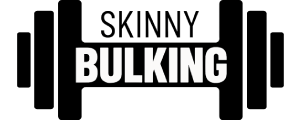Building muscle and getting ripped is not an easy feat. It requires dedication, hard work, and consistency. However, with the right tips, tricks, and exercises, anyone can achieve their dream body. In this ultimate guide, we have compiled everything you need to know about gaining muscle and getting ripped. From nutrition and supplements to workouts and recovery, we’ve got you covered. Whether you’re a beginner or an experienced fitness enthusiast, this guide has something for everyone. So, get ready to transform your body and take your fitness to the next level with these expert tips and tricks.
1. Benefits of gaining muscle and getting ripped

Image: unsplash
Gaining muscle and getting ripped is not just about looking good, it comes with a whole host of benefits. Firstly, it boosts your metabolism, helping you burn more calories even when at rest. This means that you’ll be able to maintain a healthy weight and keep fat at bay more easily.
Secondly, gaining muscle and getting ripped can significantly improve your physical performance. Whether you’re an athlete or just someone who enjoys being active, having more muscle mass can help you jump higher, run faster, and lift heavier weights.
Thirdly, muscle is a vital component of our bodies and having more of it can improve our overall health. For example, it can help regulate blood sugar levels, improve bone density, and reduce the risk of injury.
Gaining muscle and getting ripped can also boost your self-esteem and confidence. When you look and feel good, it can be a huge morale boost and help you feel more positive about yourself and your abilities.
Finally, building muscle and getting ripped is a long-term investment in your health and well-being. It’s not just about short-term gains, but rather a lifestyle change that can lead to long-term benefits.
2. Understanding muscle growth and fat loss
Before embarking on your muscle-building and fat loss journey, it’s important to understand the basics of how your body works. Muscle growth and fat loss are two separate processes that require different approaches.
Muscle growth occurs when you challenge your muscles through weightlifting or resistance training. When you lift weights, you create micro-tears in your muscles. Your body then repairs these tears, making your muscles stronger and bigger in the process. This is why strength training is essential for muscle growth.
On the other hand, fat loss occurs when you consume fewer calories than your body burns. It’s essential to maintain a calorie deficit if you want to lose fat. This means eating fewer calories than your body needs to maintain its current weight.
To build muscle and lose fat simultaneously, you need to strike a delicate balance between calorie intake and exercise. It’s essential to consume enough protein to support muscle growth while still maintaining a calorie deficit to promote fat loss.
In summary, muscle growth and fat loss require different approaches, but it’s possible to achieve both simultaneously with the right diet and exercise plan. Understanding the basics is key to creating a personalized plan that works for you.
3. The role of strength training and cardio in building muscle and burning fat
When it comes to building muscle and burning fat, strength training and cardio play very important roles. Strength training helps to build and tone muscles, while cardio helps to burn fat and improve cardiovascular health. Both are important for achieving a ripped and muscular physique.
Strength training involves lifting weights or using resistance machines to target specific muscle groups. Compound exercises such as squats, deadlifts, and bench presses are great for building overall muscle mass and strength. Isolation exercises such as bicep curls and leg extensions can be used to target specific muscles and enhance definition.
Cardio, on the other hand, involves exercises such as running, cycling, and swimming that get your heart rate up and burn calories. Doing cardio regularly can help to improve your endurance and stamina, and it also helps to burn fat, which is crucial for achieving a lean and muscular physique.
The key to balancing strength training and cardio is to find a routine that works for you. Some people prefer to do both on the same day, while others prefer to alternate between strength training and cardio days. Whatever your preference, it’s important to remember that consistency is key. Aim to strength train and do cardio at least three times a week, and gradually increase the intensity and duration of your workouts over time. With dedication and hard work, you can achieve your muscle-building and fat-burning goals.
4. Diet and nutrition for muscle growth and fat loss
When it comes to gaining muscle and getting ripped, diet and nutrition are just as important as exercise. In fact, some experts say it’s even more important!
To build muscle, your body needs protein to repair and grow the muscle fibers that break down during a workout. Aim to eat a protein-rich diet, including lean meats such as chicken and turkey, fish like salmon and tuna, eggs, and beans. Adding a protein shake after your workout can also help with muscle recovery.
But it’s not just about protein. Your body also needs carbohydrates for energy during workouts and to replenish glycogen stores in your muscles. Complex carbohydrates like whole grains, sweet potatoes, and brown rice are ideal. Healthy fats are also important for hormone regulation and energy production, so make sure to include sources like avocado, nuts, and olive oil.
To lose fat, you’ll need to be in a calorie deficit, meaning you’re burning more calories than you’re consuming. But it’s important to do this in a healthy way, not by drastically cutting calories or skipping meals. Eating smaller, more frequent meals throughout the day can help keep your metabolism revved up and prevent overeating.
Don’t forget about hydration, either. Drinking plenty of water is essential for overall health and can help with muscle recovery and fat loss. Aim for at least 8 glasses a day, and more if you’re especially active.
Remember, building muscle and losing fat is a marathon, not a sprint. Stick to a healthy, balanced diet and you’ll see results over time.
5. Importance of rest and recovery for muscle growth
Many people believe that working out and lifting weights is the only way to gain muscle and get ripped. However, this simply isn’t the case. In fact, rest and recovery play an incredibly important role in muscle growth.
When you lift weights, you are essentially breaking down your muscles. It’s during periods of rest and recovery that your body repairs and rebuilds those muscles, making them stronger and bigger. If you don’t give your muscles enough time to recover, you run the risk of overtraining, which can actually hinder muscle growth and even lead to injury.
So, how much rest do you need? This will vary depending on a number of factors, such as your age, fitness level, and the intensity of your workouts. Generally speaking, it’s recommended that you take at least one day off from lifting weights each week, and that you get 7-9 hours of sleep each night.
It’s also important to pay attention to your body and give yourself more rest if you need it. If you’re feeling particularly sore or fatigued, take a day or two off from lifting weights to allow your muscles to fully recover.
In addition to rest and sleep, there are a number of other recovery methods that can help enhance muscle growth. These include things like foam rolling, massage, and stretching. By incorporating these recovery methods into your routine, you’ll be able to train harder, recover faster, and ultimately see better results.
6. Common mistakes to avoid when trying to gain muscle and lose fat
When it comes to gaining muscle and losing fat, there are common mistakes that many people make. The first is not eating enough calories. In order to build muscle, you need to consume more calories than you burn. However, to lose fat, you need to consume fewer calories than you burn. It can be a tricky balance, but it’s important to find the right amount of calories that will allow you to build muscle while also losing fat.
Another mistake is not getting enough protein. Protein is essential for building and repairing muscle tissue, and it also helps you feel full for longer periods of time. Aim for at least one gram of protein per pound of body weight each day.
Skipping rest days is another common mistake. Rest days are crucial for allowing your muscles to recover and grow. Without proper rest, you increase your risk of injury and can actually hinder your progress.
Lastly, many people focus too much on cardio and not enough on weightlifting. While cardio is important for overall health, weightlifting is crucial for building muscle. Aim for three to four weightlifting sessions per week and incorporate cardio as needed.
By avoiding these common mistakes, you can ensure that you’re on the right track to gaining muscle and losing fat.
7. Exercises to gain muscle and get ripped
When it comes to gaining muscle and getting ripped, exercise is a crucial component. Here are some exercises that can help you achieve your goals:
1. Squats – Squats are a compound exercise that work your entire lower body, including your glutes, quads, and hamstrings. They also engage your core and help build overall strength.
2. Deadlifts – Deadlifts are another compound exercise that work multiple muscle groups, including your back, glutes, hamstrings, and core. They are great for building overall strength and can help you pack on muscle.
3. Bench press – The bench press is a classic exercise that works your chest, shoulders, and triceps. It is great for building upper body strength and can help you develop a well-defined chest.
4. Pull-ups – Pull-ups are a bodyweight exercise that work your back, biceps, and forearms. They are great for building upper body strength and can help you achieve a V-shaped torso.
5. Lunges – Lunges are a unilateral exercise that work your glutes, quads, and hamstrings. They also engage your core and help improve balance and stability.
6. Overhead press – The overhead press is a compound exercise that works your shoulders, triceps, and upper back. It is great for building upper body strength and can help you achieve a well-defined shoulder and back muscles.
Incorporating these exercises into your workout routine can help you gain muscle and get ripped. Remember to start with a weight that is comfortable for you and gradually increase the weight as you get stronger. Also, make sure to give your muscles time to rest and recover between workouts.
8. Tips for proper form and technique

Image: unsplash
\When it comes to gaining muscle and getting ripped, proper form and technique are crucial. Not only does it help prevent injuries, but it also ensures that you’re targeting the right muscles and getting the most out of each exercise.
First and foremost, always start with a warm-up before any workout. This helps increase blood flow and prepares your muscles for the upcoming workout. When it comes to form and technique, it’s important to focus on your body alignment, posture, and breathing.
Always keep your body in a neutral position and make sure your movements are controlled and intentional. If you’re not sure how to perform a particular exercise, it’s always better to start with a lighter weight until you feel comfortable with the movement.
Another tip is to use a mirror or record yourself performing the exercise so you can see your form and technique. This allows you to make adjustments and correct any mistakes you may be making.
Lastly, don’t forget to breathe properly during your exercises. Inhale during the eccentric (lowering) portion of the movement and exhale during the concentric (lifting) portion. This helps oxygenate your muscles and improve your overall performance.
Overall, proper form and technique are essential for achieving your muscle-building goals. Take the time to master each exercise and focus on your body alignment, posture, and breathing for optimal results.
9. How to create an effective workout plan
Creating an effective workout plan is crucial if you want to gain muscle and get ripped. Without a plan, you’ll likely end up wasting time in the gym and not seeing the results you want. Here are some tips on how to create an effective workout plan:
1. Set clear goals: Before you start planning your workouts, it’s important to set clear goals. Do you want to gain muscle mass, lose fat, or both? What specific areas of your body do you want to target? Having clear goals will help you create a plan that is tailored to your needs.
2. Choose exercises that target multiple muscle groups: Compound exercises such as squats, deadlifts, and bench press are great for building muscle and strength because they target multiple muscle groups at once.
3. Incorporate progressive overload: To see results, you need to challenge your muscles by gradually increasing the weight you lift over time. This is called progressive overload, and it’s an important principle of any effective workout plan.
4. Plan your workouts in advance: Once you’ve chosen your exercises, plan out your workouts in advance. This will help you stay on track and ensure that you’re hitting all the muscle groups you want to target.
5. Rest and recovery: It’s important to give your muscles time to rest and recover between workouts. Make sure you’re getting enough sleep and taking rest days as needed.
By following these tips, you can create an effective workout plan that will help you achieve your muscle-building goals and get ripped. Remember to stay consistent and track your progress along the way.
10. Tracking progress and staying motivated
Tracking your progress and staying motivated is extremely important in any fitness journey, especially when it comes to gaining muscle and getting ripped. It’s easy to get discouraged when you don’t see immediate results, but keeping track of your progress can help you stay motivated and see how far you’ve come.
One way to track progress is to take before and after photos. This can be a great way to see the physical changes in your body that you may not notice day-to-day. You can also take measurements of your arms, chest, waist, and thighs to track muscle growth.
Another way to track progress is to keep a workout journal. Write down the exercises you’re doing, the weight you’re lifting, and the number of reps and sets. This can help you see improvements in your strength over time and allow you to track your progress in the gym.
In addition to tracking progress, it’s important to stay motivated. One way to do this is to set realistic goals for yourself. Whether it’s adding five pounds to your bench press or doing an extra rep, setting goals can give you something to work towards and help you stay motivated.
It’s also important to find a workout buddy or join a fitness community. Having someone to hold you accountable and offer support can make all the difference when it comes to staying motivated. And remember, progress takes time, so be patient with yourself and keep pushing towards your goals.
11. How to overcome plateaus and continue to make progress
At some point, you may find that you hit a plateau where you are no longer making progress in your muscle-building and fat loss journey. This can be a frustrating experience, but it’s important to remember that it’s a natural part of the process.
To overcome plateaus, you need to switch up your routine. This can mean increasing the intensity of your workouts by adding weight or increasing your reps, changing the exercises you’re doing, or even trying a completely new workout routine.
You should also make sure that you are fueling your body with the right nutrients, as a lack of proper nutrition can contribute to hitting a plateau. Consider adjusting your diet to include more protein or changing up your macronutrient ratios to see if that helps.
Another important factor is rest and recovery. Make sure that you are giving your muscles adequate time to rest and recover between workouts, and consider incorporating techniques like foam rolling, stretching, and massage to aid in recovery.
Finally, it’s important to stay motivated and focused on your goals. Sometimes hitting a plateau can lead to frustration and a loss of motivation, but it’s important to remember why you started and to keep pushing forward. With the right mindset and determination, you can overcome plateaus and continue to make progress in your muscle-building and fat loss journey.
12. Supplements for muscle growth and fat loss
Supplements can be a great addition to your muscle growth and fat loss journey. However, it’s important to remember that supplements are not magic pills that will give you overnight results. They are meant to supplement and enhance your diet and exercise routine. Here are some popular supplements that can aid in muscle growth and fat loss:
1. Whey protein: Whey protein is a popular supplement among bodybuilders and athletes. It’s a quick and convenient way to get your daily protein intake, which is essential for muscle growth and repair.
2. Creatine: Creatine is a natural compound found in our bodies and in foods like meat and fish. It’s also a popular supplement among athletes and bodybuilders because it can increase muscle strength and power.
3. BCAAs: Branched-chain amino acids (BCAAs) are essential amino acids that cannot be produced by our bodies. They can help with muscle recovery, reduce muscle soreness, and even improve endurance during workouts.
4. Caffeine: Caffeine is a natural stimulant that can give you an energy boost during workouts. It can also increase metabolism and aid in fat loss.
5. Green tea extract: Green tea extract contains compounds that can help with fat loss and weight management. It can also provide antioxidant benefits.
Remember, before adding any supplements to your routine, it’s important to consult with a healthcare professional or a registered dietitian to ensure that they are safe for you and won’t interfere with any medications you may be taking.
13. Addressing common concerns and misconceptions
When it comes to gaining muscle and getting ripped, there are many concerns and misconceptions that can hold people back from achieving their goals. One common concern is that lifting weights will make you bulky and masculine. This is a common misconception – while lifting weights can help you build muscle, it will not automatically make you bulky or masculine. In fact, building muscle can help you achieve a leaner, more toned physique.
Another concern is that you need to spend hours at the gym every day to see results. This is not true! Focusing on high-intensity workouts and proper nutrition can help you achieve your muscle-building goals in less time. Additionally, it’s important to remember that rest and recovery are just as important as the workouts themselves.
There are also many misconceptions around nutrition when it comes to gaining muscle and getting ripped. Some believe that you need to consume large amounts of protein and cut out all carbs, while others believe that a high-carb diet is the way to go. The truth is that everyone’s nutritional needs are different, and it’s important to work with a professional to develop a nutrition plan that works for you and your goals.
By addressing these common concerns and misconceptions head-on, you can better understand what it takes to gain muscle and get ripped. With the right mindset, knowledge, and dedication, you can achieve the physique you’ve always wanted.
14. Final thoughts and recommendations.
Congratulations! You’ve made it to the end of this ultimate guide to gaining muscle and getting ripped. By now, you should have a good understanding of the tips, tricks, and exercises that can help you achieve your fitness goals.
Remember, building muscle and getting ripped takes time, effort, and dedication. It won’t happen overnight, but with consistency and discipline, you can make progress and achieve the results you want.
Here are some final thoughts and recommendations to keep in mind:
– Set realistic goals: Don’t try to achieve too much too quickly. Set realistic goals for yourself and focus on making steady progress.
– Stay consistent: Consistency is key. Stick to your workout routine and nutrition plan, even on days when you don’t feel like it.
– Get enough rest and recovery: Rest and recovery are just as important as exercise and nutrition. Make sure to get enough sleep and give your body time to recover between workouts.
– Track your progress: Keep track of your workouts, nutrition, and progress so you can see how far you’ve come and make adjustments as needed.
– Seek professional guidance: If you’re unsure about anything or need help with your fitness journey, consider seeking guidance from a certified personal trainer or nutritionist. They can provide personalized advice and support to help you reach your goals.
In conclusion, gaining muscle and getting ripped is a challenging but rewarding process. With the right mindset, knowledge, and effort, you can achieve the body you’ve always wanted. Good luck and stay committed!







Leave a Reply